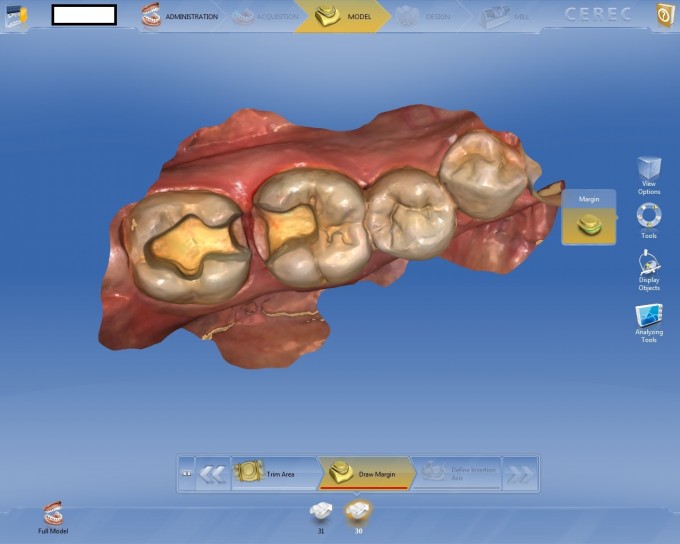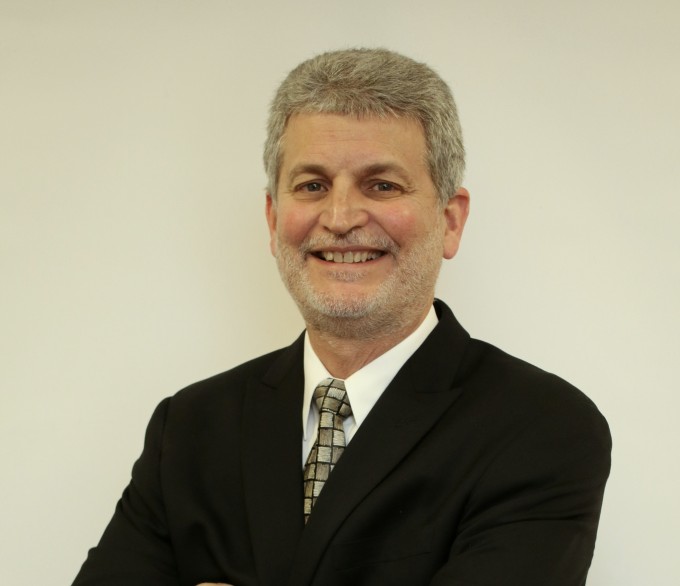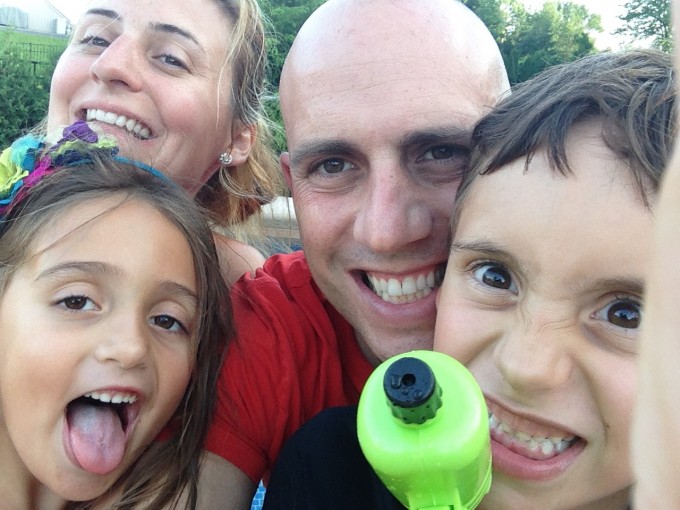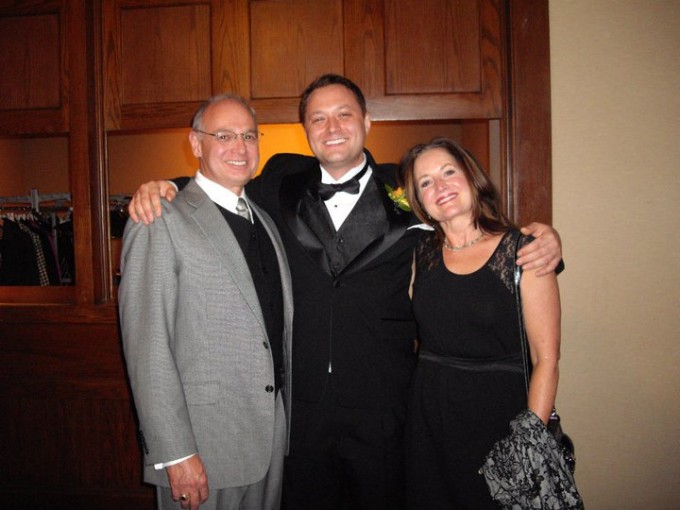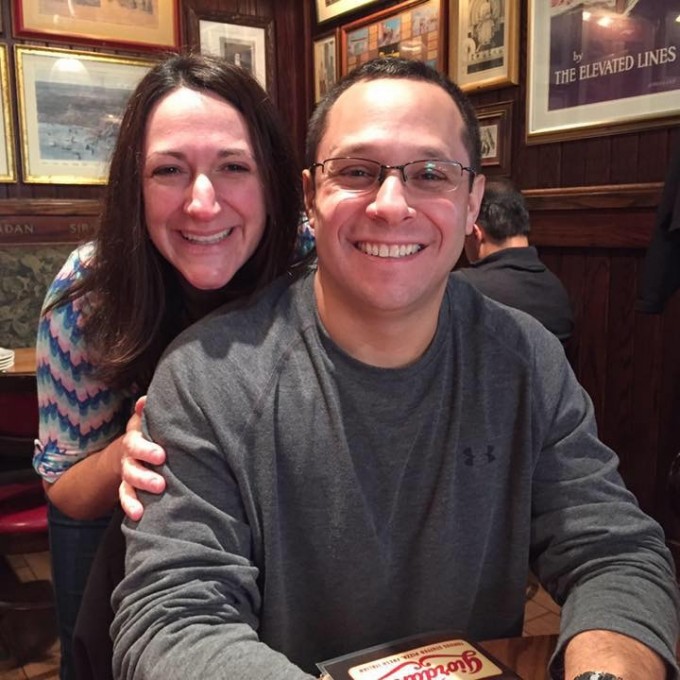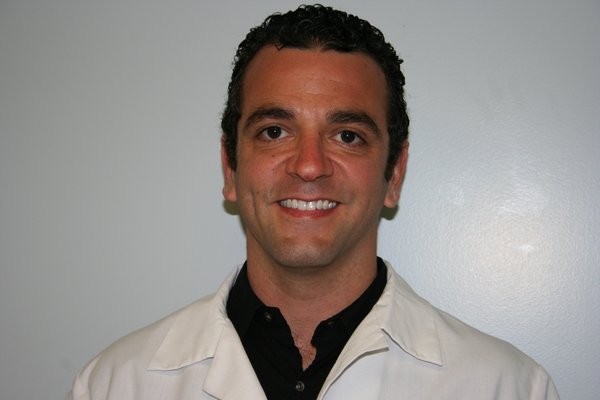CEREC Inlay/Onlay Prep Tip
I’m going to pass on a tip that I learned from my good friend and colleague Mark Fleming many years ago at a cerecdoctors.com course about prepping an inlay or onlay. Inlays and onlays can be one of the toughest restorations to do with CAD/CAM. The reason this is so is that the passive seating of the restoration is very dependent on an ideal prep. Doctors have the tendency to prep with undercuts when doing inlay or onlay type restorations. If the prep has an undercut in the area of the proximal box, it will lead to an open margin at the interproximal wall. The other problem that occurs during the prep is that doctors try to be so conservative during the prep of an inlay that we start from the internal of the tooth when prepping and then work their way to the interproximal. They are using a cylindrical shaped bur and when prepping from inside the prep and then extending to the exit wall, they find themselves creating a S-Curve on that exit wall due to the shape of the bur. The milling unit is not a fan of prepping S-Curves. It can really struggle with this. These preps need straight exit walls at the interproximal. This is where the fantastic tip from Dr Fleming shines. When prepping an inlay or onlay, start prepping from the outside of the tooth at the exit wall and move into the tooth. This will create a straight line and it will be easier to angle the bur in a way to make that wall divergent so you will not have an undercut.
Below is a photo of a case that I did last week. I prepped the occlusal aspect but did not break contact from the internal. I actually move the bur to the outside of the prep and prep inward to connect things. Once I prepped #30, doing the prep for 31 MO was much easier. Look at the screen shot of the preps. The exit walls are divergent and there are no S-curves. This will help to insure a fantastic fitting restoration and great contours that are hard to create when doing things direct.
this is an oldie but a goodie. If you want to get into doing cerec composite restorations, this tip is a must as far as I'm concerned. makes prepping so much faster and seating so much more predictable. I have learned a lot of things since my journey with cdocs, and this tip that flem gave me is about one of the most important for me in regards to making one of the most challenging restorations we do (inlays/indirect composite restorations) a ton easier! I think of you flem every time I do this and smile a bit. This is the gift that keeps on giving when it comes to my bread and butter cad cam dentistry
No undercuts in inlays. Prep with draw. This is different from what was done in the old Redcam and Bluecam days. With the Omnicam, prep with draw.
On 1/13/2017 at 11:22 am, Rich Rosenblatt said...this is an oldie but a goodie. If you want to get into doing cerec composite restorations, this tip is a must as far as I'm concerned. makes prepping so much faster and seating so much more predictable. I have learned a lot of things since my journey with cdocs, and this tip that flem gave me is about one of the most important for me in regards to making one of the most challenging restorations we do (inlays/indirect composite restorations) a ton easier! I think you flem every time I do this and smile a bit. This is the gift that keeps on giving when it comes to my bread and butter cad cam dentistry
Thanks, Rich!
This is a nice tip. Now I need a tip on how to justify this procedure and what a ballpark cost should be, and how to handle being a ppo with insurance...
'I use the v-ring to do interprox resins but often don't like my contact and know that with non-flossers that I'll be seeing recurrent decay within 5 years...
'can we talk pros cons and pricing/time in chair/ppo insurance? Thoughts?
Never mind...I read a couple old posts
if we participate with insurance we're stuck with resin fee, and thus inlays not realistic to be profitable.
if we want to go around insurance, we illegally charge a "block fee", then inlays could make sense if get 100 or 200 more than resin filling...
conclusion, my ass is too tight to sneak behind insurance back, and I'm not gonna use half hour chair time when could do a 3 minute filling if fee similar
If insurance was cool, they'd have a code for cerec inlay = 350ish, onlay 550ish, and crown 800ish. Oh well, maybe someday .
I don't want to get into a Dentaltown style debate with Jeff Levy. I totally get what he is saying. I look at it a little differently. If I am doing a first time restoration for interproximal caries I will do a direct placement composite if the caries does not undermine the enamel past the buccal or lingual line angles. If the line angles are undermined I will restore the tooth the same way I do when I am replacing an old amalgam--by the time the amalgam is removed, the line angles are always undermined. I restore those with a CEREC inlay which I have become proficient enough doing that I can complete those larger restorations, many times, faster than I can do a direct placement, especially when the restoration is sub G and a wedge can't be placed apical to the gingival margin of the interproximal box. I recently received a letter from a missionary I have treated who is ministering in the Dominical Republic. He had to share with me that the dentist he visited where he is located told him that he had the most beautiful composite restorations that dentist had ever seen, and he had to express his gratitude. At my age, I think about my legacy once in a while. Something like that is worth more to me than the money. I helped at a mini accept event yesterday given by Todd Ehrlich. He shared his strategy for obtaining fair compensation for inlays and onlays. It is actually no different from what has been presented here in previous threads, but it requires taking photographs which takes time--removing the gloves and loupes, grabbing the camera, and writing the letter to include in the claim submission. I may try it to see what happens. However, I am cognisant of the huge bite a $400 onlay takes out of the yearly benefit total of a financially strapped patient that has a mouthful of work to do and a $1500 dental insurance minimum. When I am gone I want to be remembered as a good Christian, husband, father, and dentist who tried to do right by the people in his life. I know that many will call me crazy. This is just my viewpoint. I accept that there are other opinions.
On 1/14/2017 at 5:18 am, Jeff Levy said...Never mind...I read a couple old posts
if we participate with insurance we're stuck with resin fee, and thus inlays not realistic to be profitable.
if we want to go around insurance, we illegally charge a "block fee", then inlays could make sense if get 100 or 200 more than resin filling...
conclusion, my ass is too tight to sneak behind insurance back, and I'm not gonna use half hour chair time when could do a 3 minute filling if fee similar
If insurance was cool, they'd have a code for cerec inlay = 350ish, onlay 550ish, and crown 800ish. Oh well, maybe someday .
Jeff, for me, the scenario of using this is for the #2 MO, #3 MOD, #4 MOD, #5 MOD quadrant of reasonably sized composites. One is futzing with sectional bands, creating acupuncture points with wedges which the patients totally enjoy, etc. Cases like this wanted me to quit dentistry, and not just for the morning or day!!! ![]() I was beat.
I was beat.
Now for the almighty fee. I'm going to ask you what you fee is. And I'm going to charge the same. BUT, my fee is higher!!! No, I haven't partaken of any Scotch yet. My fee is higher because I am done with this quadrant while you are just placing your third band. And I'm going to submit more predictably. Then to another fee producing procedure. And a FEE is AMOUNT OF WORK DONE IN A PERIOD OF TIME. In the same amount of time, I'm done with the same amount of work and maybe your not.
It takes practice. All GOOD dentistry does. No BS, hope you find this post refreshing!! ![]()
On 1/14/2017 at 11:40 am, Charles LoGiudice said...I don't want to get into a Dentaltown style debate with Jeff Levy. I totally get what he is saying. I look at it a little differently. If I am doing a first time restoration for interproximal caries I will do a direct placement composite if the caries does not undermine the enamel past the buccal or lingual line angles. If the line angles are undermined I will restore the tooth the same way I do when I am replacing an old amalgam--by the time the amalgam is removed, the line angles are always undermined. I restore those with a CEREC inlay which I have become proficient enough doing that I can complete those larger restorations, many times, faster than I can do a direct placement, especially when the restoration is sub G and a wedge can't be placed apical to the gingival margin of the interproximal box. I recently received a letter from a missionary I have treated who is ministering in the Dominical Republic. He had to share with me that the dentist he visited where he is located told him that he had the most beautiful composite restorations that dentist had ever seen, and he had to express his gratitude. At my age, I think about my legacy once in a while. Something like that is worth more to me than the money. I helped at a mini accept event yesterday given by Todd Ehrlich. He shared his strategy for obtaining fair compensation for inlays and onlays. It is actually no different from what has been presented here in previous threads, but it requires taking photographs which takes time--removing the gloves and loupes, grabbing the camera, and writing the letter to include in the claim submission. I may try it to see what happens. However, I am cognisant of the huge bite a $400 onlay takes out of the yearly benefit total of a financially strapped patient that has a mouthful of work to do and a $1500 dental insurance minimum. When I am gone I want to be remembered as a good Christian, husband, father, and dentist who tried to do right by the people in his life. I know that many will call me crazy. This is just my viewpoint. I accept that there are other opinions.
You're not crazy... an admirable aspiration....and I think you are thought of that way already-- no need to wait... ![]()
Mark
No need to TRY to be a good Christian here... the big man upstairs for some time now has already had me pencilled in the book as a generous Jew. Therefore,I'm cool focusing on how to provide potentially better services while staying profitable during them!
Mark,
Your point is that doing a quadrant of inlays is quicker than a quadrant of resins ? I guess maybe that seems surprising to me.. is that possible??
None of us like doing back to back interproximal shitty resins, so using cerec more sure sounds nice, but I'm not sure I can do multiple inlays anywhere near as fast as resins, not to mention the cost of blocks, the assistants slow to get to the machine,the resin cement cleanup stress, the cord isolation, the way to often milling unit error or issue that needs attention...etc..
can a few back to back inlays on a ppo patient possibly be wise for most of us to consider? I greatly respect your experience and teachings so I look forward to your response.
Jeff, if it's been done, it's probably possible.
You prep well, image well, either you or well trained staff gets proposals, while the mill is happening in another room creating more dentistry, bonding not that difficult.
I did it in a PPO practice. I used the correct diamonds to do the work and I was focused. The software is good enough to do it with no opposing. (No missing cusps)
I couldn't do this in a time efficient manner either .... in the beginning. Practice, practice, practice like anything in dentistry, including using technology in ones practice.
Hope that answers your questions/concerns. Wanted to let you know it's possible.
thx mark... so in the ppo office you did the inlays, did hey downgrade to 80 dollar fillings? Did u up charge to cover the costs at all? Are we allowed to?
Jeff, one way to circumvent your concerns is to charge a 9999 code for a "precision milled CAD/CAM restoration." I think $30-50 is fair. The insurance company cannot disallow this, just don't expect reimbursement. If you give your patients the option to have a such a superior restoration placed instead of a "regular old plastic filling" you would be surprised at the acceptance rate.
Ryan,
I believe it may be fraud to charge that extra fee in anticipation of an insurance downgrading an inlay to a resin.
Similarly, I also think you can't do an inlay and just charge a resin to the insurance , but collect more from the patient.
i hope I'm wrong but let's see what others reading this say.
On 1/14/2017 at 3:32 pm, Jeff Levy said...thx mark... so in the ppo office you did the inlays, did hey downgrade to 80 dollar fillings? Did u up charge to cover the costs at all? Are we allowed to?
Jeff, my PPO fees were not that low, especially on multi surface restorations. No upcharges.
Fraud is to downgrade a precision made CAD/CAM restoration to a direct placed amalgam as insurance companies do to you and thousands of dentists every day. If you are okay with that, I suppose I cannot change your perspective. Living in fear is no way to live.
"Similarly, I also think you can't do an inlay and just charge a resin to the insurance , but collect more from the patient."
You know insurance will only pay for a resin but you delivered a vastly superior product. Why do you feel you can't charge for your superior work? You did do it, correct? I'm not trying to be condescending, I just want to understand why dentists feel they should let insurance companies dictate their treatment decisions. Its getting out of control I believe. Thank you kindly in advance for your thoughts.
Just one additional thought that may play into the decision to place or to mill. It must be taken into consideration how often a practice will redo a direct proximal box PCR due to contact or open margins or other errors. We calculated the lost revenues in these zero profit appts, not to mention the missed opportunnity cost to make revenues from another paying pt. That's when I chose to mill most 3-4 surface PCRs.
Ryan,
buffalo is oversaturated with dentists, so participating with insurance is necessary. When you participate you sign away what is logical and agree to their nonsense. I believe other cerec docs told me that means you're doing something fraudulent when deciding your superior product can be charged higher to a patient than what the inlay code reimburses in the insurance fee schedule. I'm just reiterating what I believe I've heard from other cerec docs in similar issues on other threads. In my opinion also, a same day cerec crown should have its own higher paying code than a two appointment lab crown. Not sure what the penalty's are if get caught up charging but I'm not the type to push any boundaries with that stuff.
Dr Chuck mentioned Todd Ehlrich may have some good info on this subject... we should search this site or other sources on this issue which I'm sure has been discussed at length by others
On 1/15/2017 at 3:38 am, Jeff Levy said...Hey Jeff. I understand your logic. Is Buffalo over saturated with CEREC dentists or just run of the mill dentists? The rhetorical purpose of this question is to ask if you believe you have a different service to offer than the majority of those dentists practicing in Buffalo. No one, not even insrance companies, can commoditize unique experiences and services. It is up to (us) unique dentists to decide how they wish to submit to insurance companies. Fight the power brother man.Ryan,
buffalo is oversaturated with dentists, so participating with insurance is necessary. When you participate you sign away what is logical and agree to their nonsense. I believe other cerec docs told me that means you're doing something fraudulent when deciding your superior product can be charged higher to a patient than what the inlay code reimburses in the insurance fee schedule. I'm just reiterating what I believe I've heard from other cerec docs in similar issues on other threads. In my opinion also, a same day cerec crown should have its own higher paying code than a two appointment lab crown. Not sure what the penalty's are if get caught up charging but I'm not the type to push any boundaries with that stuff.
10% of buffalo dentists are on par with what I can provide.. so I guess not truly oversaturated...
i did my first true inlay today ('versus usually crowns, onlays,and fillings)
the inlay was cerasmart and it was an MOD on 3...isodry, cerasmart, variolink..
the insurance was delta and I told patient not sure how the insurance will work so she may owe up to 200 after we submit..
'she was fine with that
now... being a ppo, not sure if I should : 1)submit for a 3 surface resin, then a separate upgrade made up code to the patient for 200
or should I : 2) code a three surface porcelain inlay, send to insurance, watch them decline or downgrade to a resin, and then they may say I'm not allowed to charge more to the patient than the 20 percent filling copay...(and thus never see that extra 200 that I'd think we deserve... or at least something extra)
any participating dentists have a good billing method for this to end up with a 300 dollar collection instead of a 100 dollar collection (ie. the normal insurance direct resin fee)? Or as some hinted, do most of u just bill a resin and not get compensated for the cerec inlay?
the procedure in my hands took more time than direct resin and used more expensive parts, thus a shame if took the hit daily on these, right?
I'm lookin to play by insurance rules since signed up, but if grey area on this porcelain/resin material or coding philosophy, I want to make sure we're realizing deserved return on investment
Jeff, I feel your pain as I have a fair amount of PPO in my practice as well. We submit for Inlays/Onlays and oftentimes receive reimbursement for such but as someone else mentioned earlier, take a pre-op, intra-op and post-op PHOTO of every single inlay/only case. Doing so has eliminated most of the insurance games they play to attempt to deny reimbursement. The best is when they deny payment due to saying I didn't do the actual restoration because they can't see an e.Max onlay on the radiograph! Photos will save your butt and are worth the time and effort. Every now and again I have to submit a narrative but since making photos the standard I really haven't had to in a while. When insurance does downgrade to composite or amalgam then patient is simply responsible to pay the difference (this is legal in Ohio, not sure in NY) and we make sure that patients are well aware of this possibility up front. Actually, since we do lots of inlays/onlays (bread and butter procedure now) we have added these to the standard insurance breakdown my front desk obtains prior to patient first visit. Simply explain the benefits over direct resin and pt. acceptance should be easy. I like to tell the patient that an Onlay is a more conservative restoration than a crown (to which most of them can relate) that uses the same crown material in place of a very large filling - 100% acceptance.
- Doug
Doug ... with inlays I say " undermined cusp" or " pain to percussion"...and show cracks ... thus they get approved..
'but what's to show with an inlay? An mod prep? They'll downgrade instantly to a fill I think. What makes them go ahead and agree to an inlay fee?
For inlays we usually leave it as patient had option, chose indirect restoration and make sure patient is aware up front they will likely have to make up the difference if insurance downgrades - it's hit or miss. I agree, onlays are more predictable and usually reimbursed without problem. Maybe someone else here has a better way to get reimbursement for inlays? In all instances though, photos will only help.
Also, great tip to prep form the outside in! I have a habit of not making my proximal boxes wide enough (trying to be too conservative) which poses a problem with the design and not being able obtain a perfectly contoured proximal restoration surface. I find myself having to go back and refine my prep, rescan and redo all too often.
On 1/17/2017 at 7:57 pm, Jeff Levy said...
now... being a ppo, not sure if I should : 1)submit for a 3 surface resin, then a separate upgrade made up code to the patient for 200
or should I : 2) code a three surface porcelain inlay, send to insurance, watch them decline or downgrade to a resin, and then they may say I'm not allowed to charge more to the patient than the 20 percent filling copay...(and thus never see that extra 200 that I'd think we deserve... or at least something extra)
any participating dentists have a good billing method for this to end up with a 300 dollar collection instead of a 100 dollar collection (ie. the normal insurance direct resin fee)? Or as some hinted, do most of u just bill a resin and not get compensated for the cerec inlay?
the procedure in my hands took more time than direct resin and used more expensive parts, thus a shame if took the hit daily on these, right?
You should bill correctly for what you do. If you are worried about whether they will downcode or not you can always pre-auth. The main thing though is to read your contract. That is the only way to know what you have agreed to do in regards to balance billing in the event of a downcode.
Had my office manager call delta. They said bill what you do, inlay... but when they downgrade to a filling, there's no way to charge the patient more. I participate with them and can't afford not to due to our marketplace. So... I guess I can't do inlays on delta given they cost more to me than resin and take more time for me than resin. That's pretty messed up that I could get in trouble with insurance when it's a win win for doctor and patient and has nothing to do with insurance. May have to put my foot down.
Can the patient still make their copay for the inlay and you just can't charge the patient the difference when they downgrade?
Garo, I'll call each insurance myself over next week. I called delta today. The girl actually today said if they downgrade to resin, we can upcharge patient to their inlay fee.
if they reject, we can charge even up to private fee. So this is good news as my goal is to get in That 200-350 range for inlays . More calls next week
Ok..made some more calls...
for inlays...
delta, metlife, and guardian all have an inlay fee (between $200-450)...
with all of those insurances, if they downgrade to resin, we can go ahead and charge up to their inlay fee where the patient pays the difference
still not sure when to do inlays vs resins for interproximals... seems that all who do resins where ya break contact or if need to break contact based on decay or old amalgam, we should go for inlays if have a cerec and get proficient at it...




